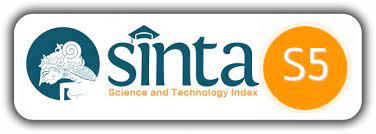LEKSIKON DAN GRAFEM BERDASARKAN VISUALISASI GAMBAR: KAJIAN PSIKOLINGUISTIK
Abstract
There are two lexical problems in children, one of which is lexical mastery itself. The purpose of this research is to photograph the lexical picture possessed by children based on the visualization of images and conversations that are carried out during interactions. The research method uses a qualitative approach with observation and recording techniques. The subjects in this study were seven children located in three different locations. The results of lexical recording in general, children can pronounce correctly according to the meaning, although in some children it is still not in accordance with the meaning or the pronunciation. This is caused by environmental conditions and different children's lexical mastery
References
Adelman, J. S., Brown, G. D. A., & Quesada, J. F. (2006). Contextual Diversity, Not Word Frequency, Determines Word-Naming and Lexical Decision Times. Psychological Science, 17(9), 814–823. https://doi.org/10.1111/j.1467-9280.2006.01787.x
Annisa, SRN. Suparwa, IW. Teguh, IW.(2016). Penguasan Leksikal pada anak: Kajian Psikolinguistik. Jurnal Humanis, Vol. 17, No. 3. 2016, hal 301-306
Balota, D. A., & Chumbley, J. I. (1984). Are lexical decisions a good measure of lexical access? The role of word frequency in the neglected decision stage. Journal of Experimental Psychology: Human Perception and Performance, 10(3), 340–357. https://doi.org/10.1037/0096-1523.10.3.340
Bromley, K. D. (1992). Language Arts: Exploring Connections. York: West Publishing Company.
Chairunnisa. (2018). "Pemerolehan Bahasa pada Bayi dan Anak". Cakrawala Dini: Jurnal Pendidikan Anak Usia Dini, 9(2).
Erniwati. (2017). Skripsi: "Semantik Leksikal Pantun dalam Sastra Bima".
Makassar: Universitas Muhammadiyah Makassar.
Failasofah, F., & Dayij Alkhrisheh, H. T. (2018). Measuring Indonesian Students’ Lexical Diversity and Lexical Sophistication. Indonesian Research Journal in Education |IRJE|, 2(2), 97-107. https://doi.org/10.22437/irje.v2i2.6098
Koren D’Angelo Bromley, (1992).Language Arts: Exploring Connections (2nd ed), York: West Publishing Company.
Malik, Ranbir Singh. (2013). Qualitative Research Methodology in Education, Jurnal Edubio Tropika, Vol. 1, No. 2, hal. 61-120.
R. Binder, K. A. McKiernan, M. E. Parsons, C. F. Westbury, E. T. Possing, J. N. Kaufman, L. Buchanan; Neural Correlates of Lexical Access during Visual Word Recognition. J Cogn Neurosci 2003; 15 (3): 372–393. doi: https://doi.org/10.1162/089892903321593108
Setyawan, A. (2019. Perbedaan Kata, Leksem, Leksikon, dan Leksikal. Retrieved November 15, 2021, fromBelajarBahasa.ID: https://belajarbahasa.id/artikel/dokumen/406-perbedaan-kata-leksem- leksikon-dan-leksikal-2017-09-03-22-03
Soenjono Dardjowidjojo. (2012). Psikolinguistik: Pengantar Pemahaman Bahasa Manusia, Jakarta: Yayasan Obor Indonesia.
Ullman, M.T. The Declarative/Procedural Model of Lexicon and Grammar. J Psycholinguist Res 30, 37–69 (2001). https://doi.org/10.1023/A:1005204207369
Yosi Ardian, Bagaimanakah Struktur Makna Leksikal?, diakses melalui https://www.dictio.id/t/bagaimanakah-struktur-makna-leksikal/125073, tanggal 15 November 2021, oukul. 21.00 WIB







.png)





